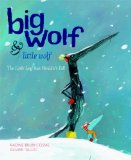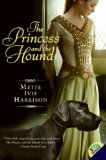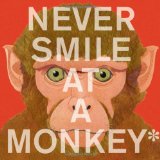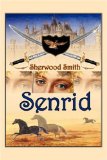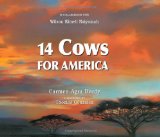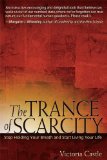 The Trance of Scarcity
The Trance of Scarcity
Stop Holding Your Breath and Start Living Your Life
by Victoria Castle
Berrett-Koehler Publishers, San Francisco, 2007. 205 pages.
Starred Review
Sonderbooks Stand-out 2010: #1 Other Nonfiction
I think that I ordered this book from isabellacatalog.com. And found it so wonderful, I kept quoting it on my Sonderquotes blog. This is a book about living life to the fullest.
In her introduction, Victoria Castle says,
“In working with thousands of people, I have repeatedly encountered the tragic theme of I am not enough — not good enough, smart enough, rich enough, young enough, old enough, worthy enough. Almost as prevalent is the theme of There is not enough — not enough time, money, opportunity, love, cooperation, power, you name it. This prevailing premise of not-enough-ness successfully cripples the lives of people who would otherwise be buoyant and passionate. Since its subjects are so readily yet unwittingly loyal to it, I came to call this blight the Trance of Scarcity.”
In this book, the author presents joyous ways of escaping the trance of scarcity. I found many of her ideas resonated with things I’d been reading in other places.
One such idea is that our experience of life depends on the story we tell ourselves about it. I liked this paragraph:
“Regarding our Stories, the question is never “Is it true?” because it can’t be true; it’s just a Story. The question also isn’t “Is it the right Story?” because that implies there’s only one correct choice. The most helpful question is “Is this Story useful?” Given what I care about, what I want to contribute, and what matters to me, is the story I’m telling myself a useful one? Most of us constantly replay hundreds of inherited default Stories that trample our life energy and steal our peace of mind.”
If you tell yourself a story of abundance instead of a story of scarcity, you will enjoy life more. And the author has ideas for helping you make the change.
Another beautiful concept is how learning to receive with gratitude leads to generosity and giving, which leads to more receiving with gratitude. This book is full of the idea of living life lavishly and overflowing with joy to others. Here’s another passage I liked:
“If we are not practiced in saying yes to life, then we can forget about bliss — we just want relief! Relief from our hectic lives, from our negative self-talk, from our perpetual fatigue. I used to think that I just had the thermostat set too low, at Relief, and that with a little more practice, I would easily move on up to Bliss. Instead, it turns out that the road to bliss and the road to relief head in completely different directions.
“Relief isn’t much; it’s only an interruption of discomfort. It leads to a nice rest stop with a turnaround that plops you right back on the same road. Bliss, however, is the superhighway to the juiciness of life. As my musician friends Bev Daugherty and Garnett Hundley sing, “Live flat out, eat it all up with a spoon!” Having a high bliss tolerance means you’re willing to be pleased by life. And the better it gets, the more you can stand. In this scenario, you anticipate benevolence and are expanded by your experience. When you are consistently grateful, it’s impossible to feel like a victim; you know that no matter how well it may be disguised, you can find the blessing in whatever’s going on.”
I didn’t review this book right after I finished reading it, because it was not a library book that needed to be checked back in, but my own copy. Doing this review has reminded me how inspiring it was. I think it’s time to slowly reread it, to remind me that my impending probable job loss by no means needs to be a tragedy, but can be an exciting opportunity. It’s all in the story I tell myself, right?
Buy from Amazon.com
Find this review on Sonderbooks at: www.sonderbooks.com/Nonfiction/trance_of_scarcity.html
Disclosure: I am an Amazon Affiliate, and will earn a small percentage if you order a book on Amazon after clicking through from my site.
